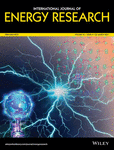Intelligent optimization of bioleaching process for waste lithium-ion batteries: An application of support vector regression approach
Summary
Recovery of toxic and vital metal from spent Li-ion batteries is a vital problem in the recycling industry. The recycling processes such as bioleaching are much simpler and environment friendly but lack the required efficiency for metal recovery to prove the commercial feasibility of the model. This work focuses on increasing the efficiency of the bioleaching process by targeting its intermediate processes for maximum vital metal recovery. The intermediate process of biomass generation from Aspergillus niger fungus is targeted. The data from experimental design is modelled using support vector regression with v-fold cross-validation. The bioleaching process is optimized such that maximum biomass concentration is obtained for efficient and commercially viable metal recovery. The results are divided into four sections, each addressing an important issue of the recycling process mechanism. The generated model is found to have good stability and accurate process mechanism predictability. Global sensitivity and interaction analysis is employed for efficient weighted optimization. The model generated trends and optimization results are verified through the profiling curve as well as past literature experimental data. This work reports the maximum biomass concentration of 25 g/L. The model employed is stable and efficient, reaching a stable optimized value under 300 iterations. The optimized input parameters values obtained are 144.39 g/L, 1.29% v/v, 6.70, 1513.05 ppm, 4989.79 ppm, 2094.22 ppm, 347.57 ppm and 2.37 for sucrose concentration, inoculum size, initial pH, oxalic acid, gluconic acid, malic acid, citric acid concentration and final pH, respectively.




